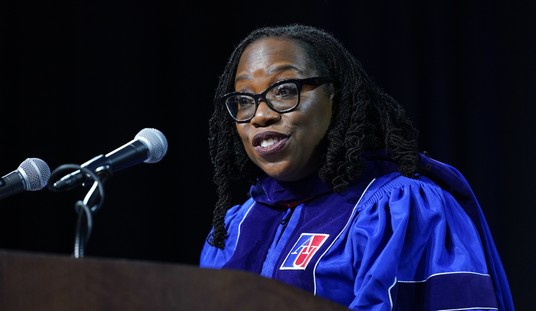I can’t take any credit for this idea as it comes entirely from James Lindsay. Wednesday he published his argument along these lines and it is more than 30,000 words long. So long that I’ve only read a fraction of it at this point but the gist of the argument is clear:
Critical Social Justice has already encroached deeply into our public education system and halls of government in the United States. In fact, this trend is accelerating to a pitch so extreme that complaints that schools are operating in the service of political indoctrination rather than as houses of a basic and liberal education, as they were initially conceived, are rapidly becoming plausible. The second is that a time may come in the not-distant future in which this totalizing and totalitarian worldview could be installed as the de facto state religion, even while it elides categorization as such. The state endorsement—or worse, enforcement—of any faith falls directly afoul of the protections the U.S. Constitution was written to ensure to individual citizens, and, in fact, to other systems of faith that would disagree with it. The question is, which totalizing worldviews that are not traditionally recognizable as faiths should be treated in the same way for the same reasons? While the answer to this question is not immediately clear, it must have to do with how they function in society and in the lives of those who believe them.
Therefore, to put it directly: It is my belief that the contents of the Critical Social Justice worldview should be protected as matters of private conscience only, and they should also be limited as such. That is, I want to contend that the Free-exercise and Establishment Clauses of the First Amendment apply to Critical Social Justice. It is therefore not merely a philosophical exercise to ask whether or not Critical Social Justice constitutes a religion but also a serious legal one that gets to the very core of what the American Experiment has always been about—freedom of belief and from state religion. It is my intention here to make this case as briefly as possible, which means it will still be very long.
Almost immediately, Lindsay confronts a problem with his argument: Wokeness exists in a post-modern framework, one which doesn’t rely on any metaphysical beliefs in forces outside man himself. In short, it’s a religion without a god or gods.
As a general note that was central to my preceding piece, it is crucial that one understand Critical Social Justice as a fundamentally postmodern phenomenon. As most religions that we are familiar with present in a genuinely premodern way by invoking literally believed spiritual forces that exist in a separate plane of reality or as imperceptible-but-causal “energies” and engage in worship and practice in ritualistic ways that are, in turn, recognizably holdovers from premodern liturgical contexts, it can be difficult to see a postmodern faith for what it is. In a postmodern faith, God is dead, and the forces that work in a mysterious way in the world are necessarily sociological as a result. Formalized liturgical modes have been deconstructed and replaced with something more decentralized, chaotic, and even ironic. Because the central object of interest in all postmodern thought is social power, postmodern “deities” are systems of social power and the “social” phenomena that construct them.
Lindsay’s answer to this is that religions can be described not just metaphysically but sociologically.
Religions are, in the most general description, moral communities that provide three basic types of psychosocial (combined psychological and social) needs for their adherents and participants: meaning-making, a sense of control, and the capacity to establish, police, and understand one’s place in a community of people with shared (religious) values. While the precise definition of a religion may remain fuzzy and elusive, speaking functionally, these properties seem to form an identifiable skeleton upon which the meat of the matter is organized.
It should be almost immediately obvious that the worldview of Critical Social Justice satisfies all of these criteria. Life in the community gains meaning in the (almost cosmic) battle for “liberation” against systemic oppression, and individual meaning (and agency) are defined almost entirely in terms of this struggle. The point of the struggle is obviously to achieve liberation from all systemic oppression, which can be achieved by gaining control over the machinations of society and the harms that an improperly managed society will mete out to some of its members, often the most vulnerable. A hierarchical community is set up by the doctrine of intersectionality around this view of the world, and policing of one’s status within it (as assessed under the term “positionality”) is famously vigorous within Critical Social Justice-run communities. A volume could be written on this topic, and yet even these few sentences are enough to convey the point that “Woke” communities are moral communities to most readers even passingly familiar with the ideology.
Lindsay does eventually argue that Social Justice has a kind of deity and a kind of teleology (though again not a metaphysical one):
Religious moral law positions God as Moral Lawgiver and (Moral) Judge, and if we were to follow Aquinas again, we could say something like that there is something that gives moral law and is the ultimate judge of moral wrongdoing, and this all men call God.
In this respect, though not necessarily in others and in not all regards, Critical Social Justice quite plainly has a God-concept, and it might be called (following but extending from Marx) “the Eye at the End of History,” which is something of a metaphor for that which looks back upon all of history from its end with the capacity to judge that which was on the right side of history and that which wasn’t. The Eye at the End of History will be able to tell the abolitionists from the slavers, the colonized and decolonizers from the colonizers, and the oppressed from the oppressors.
While they don’t believe this Eye of History is a metaphysical being they behave as if such a moral lawgiver exists. And in the light of this future judgment it’s possible to make all kinds of absolute judgments about good and evil in the world. And not only in the world but in the adherents themselves. Lindsay spends several thousand words comparing the Social Justice believers to the Puritans and notes how both groups have a similar fixation on sin, introspection, confession and the need for outside correction. Here’s his conclusion to the section about Social Justice as religion:
I think this does a thorough job of summarizing the case that Critical Social Justice, as an ideological worldview, is very similar to religion in most of the relevant ways. It forms a moral community that is designed to meet the same psychosocial needs as religions are, though it is decentralized and disorganized (I have previously called it “disorganized religion,” though “decentralized” might be nearer the mark). It provides a mythology, metaphysics, and moral law that binds the community and enables “divinity”-based psychosocial valuation of adherents and others, and this gives rise to clear “critical” duties of conscience in everyone the system can touch. It ontologically grounds its moral commandments against the long view from the End of History, as a kind of legacy-based moral lawgiver and adjudicator. It possesses its own epistemological framework as well—one rooted in the critical mythology of problematization and postmodern mythology of lived experience and discursive production. Since it proceeds from a mythology with its own creation myth, metaphysics, and moral law, this view is totalizing to those who adhere to it, as is typical of religious belief. This system of belief is, in fact, constructed along the same lines as how Augustine organized Christianity and Aquinas “proved” the existence of God. Finally, it gives way to fundamentalism of both types and manifests in puritanical form, which is something that, while it is not limited to religion, is very common within sects or cults that arise within religious movements and worldviews.
From there he moves on to the legal argument, i.e. if it is a religion then it should be bound by the same rules as other religions including the separation between church and state. At this point, I’ll skip ahead to his conclusion:
Given the situation we find ourselves in, in society today, this matter demands serious debate. If this argument is correct, Critical Social Justice must be protected under the Free-exercise Clause of the First Amendment, so that any who wish to hold this religious view for themselves as a matter of personal conscience must be protected in doing so. That is their fundamental right, and it shall not be infringed. In the same turn, the rest of us have fundamental rights to our own consciences as well, and Critical Social Justice has no standing upon which it can infringe upon them, or us. The Establishment Clause should remove Critical Social Justice from our schools, our administrative state, and the halls of our government, as this faith, like any other, cannot receive state endorsement or become a state religion.
It’s quite an audacious argument and I think Lindsay makes a convincing case that wokeism is a kind of alternate religion for a lot of people on the left. Whether it could be treated as such under the Constitution in an interesting question. It’s one thing to argue that it’s rational to do so but then you’ll wind up being shouted down by tens or hundreds of thousands of Social Justice Warriors who aren’t the least bit interested in debating you on the point. It’s just not part of their game.








Join the conversation as a VIP Member